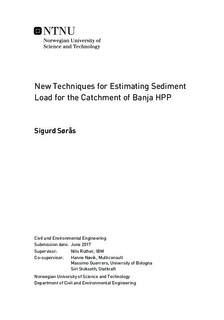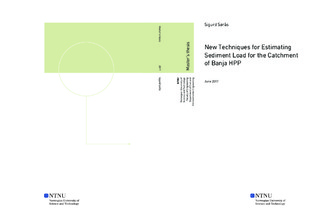| dc.description.abstract | toring water in artificial reservoirs is a common method for ensuring constant water supply for among others irrigation, electricity and drinking water. The construction of such artificial storages will disturb the natural processes in the river, leading to possible unwanted accumulation of eroded mass, sediments, in the reservoir. Sedimentation can cause great challenges, and must be held at a minimum. Despite this, many reservoirs are today facing big problems due to the designer ignoring or underestimating the problem. This could have been avoided by better and more cost efficient predictions for sediment yield used in the design process.
This thesis investigates state of the art methods to estimate sediment yield in the upstream parts of the Devoll river catchment in Albania. The study will firstly attempt to quantify the sediment yield with data derived by ADCP (Acoustic Doppler Current Profiler) for large periods of 2016. By measuring backscattered echo-intensity, the suspended sediment concentration (SSC) can be calculated, and used to determine sediment yield if discharge is known. The thesis will also assess the possibility to quantify soil loss and sediment yield by the remote sensing technique InSAR (Interferometric synthetic aperture radar). By converting vertical deformation values to volume change in the catchment, the soil loss can be calculated. Applying this information in context with a sediment delivery ratio (SDR) will result in the sediment yield for the observed period.
The study showed promising results for both methods. The excessive erosion in the catchment clearly leads to large annual sediment yields in the Devoll river. The InSAR results correlated well with the expectation of monthly erosion in Albania, and showed a high sediment yield estimation for parts of the Devoll catchment. The continuous logging of the ADCP gave important insight into the nature of the sediment transport in Devoll, indicating that the highest concentrations and transport of sediments were occurring mainly in the wake of high flood peaks. Both ADCP and InSAR techniques of estimating erosion and sediment situations will be of value for the future. | |

